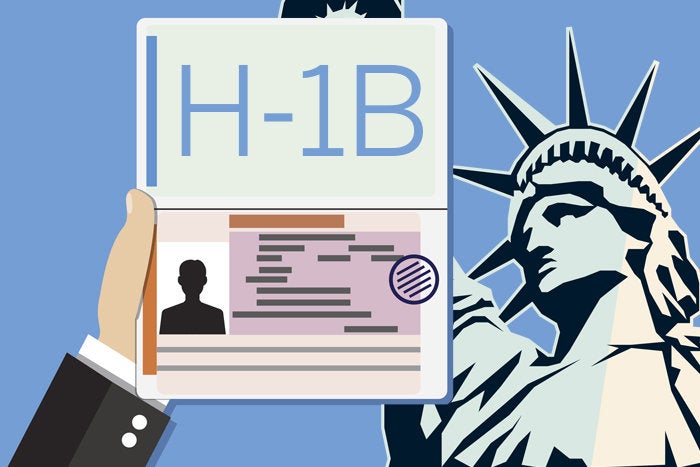To predict the approval rate of obtaining an H1B VISA in United States of America based on job industry sectors through availabe datasets of the most recent 4 fiscal years.
- Python
- postgreSQL
- H-1B_Disclosure_RAW_Data_FY15.csv
- H-1B_Disclosure_RAW_Data_FY16.csv
- H-1B_Disclosure_RAW_Data_FY17.csv
- H-1B_Disclosure_RAW_Data_FY18.csv
(NAICS_CODE in FY17 and FY18 were manually changed to NAIC_CODE to make it identical across all datasets.)
Install dependencies
from bs4 import BeautifulSoup as bs
from splinter import Browser
import pandas as pdVisit web page
executable_path={'executable_path':'/usr/local/bin/chromedriver'}
browser=Browser('chrome',**executable_path, headless=False)
url='https://www.naics.com/search-naics-codes-by-industry/'
browser.visit(url)
html=browser.htmlThe table on the page provides links to tables of a full list of codes for each category. Those links were obtained in order to access those tables.
soup=bs(html,'html.parser')
results=soup.find_all('td',{'class':'noWrap'})
code_url_list=[result.a['href'] for result in results]
browser.quit()Use Pandas to scrape the full code table for each category and concatdenate them into a single tables (3 rows of code containing '-' were meaningless and deleted manually).
table_list=[]
for url in code_url_list:
tables=pd.read_html(url)
df=tables[0]
df_new=df[['Codes','Titles']]
table_list.append(df_new)
big_df=pd.concat([*table_list])
big_df.to_csv('../H1B_Data/NAICS_CODE.csv',index=False, header=True)Install dependencies
import pandas as pdDefine a function to process each dataset respectively to remove unnecessary columns and concatdenate them into a single file.
data_list=['../H1B_Data/H-1B_Disclosure_RAW_Data_FY15.csv','../H1B_Data/H-1B_Disclosure_RAW_Data_FY16.csv','../H1B_Data/H-1B_Disclosure_RAW_Data_FY17.csv','../H1B_Data/H-1B_Disclosure_RAW_Data_FY18.csv']
def clean(data):
df=pd.read_csv(data, encoding="ISO-8859-1")
new_df=df[["CASE_NUMBER","CASE_STATUS", "DECISION_DATE", "EMPLOYER_NAME","EMPLOYER_CITY","EMPLOYER_STATE", "EMPLOYER_COUNTRY", "NAIC_CODE"]]
us_df=new_df[new_df["EMPLOYER_COUNTRY"]=="UNITED STATES OF AMERICA"]
return us_df
H1B_df_list=[]
for data in data_list:
h1b_df=clean(data)
H1B_df_list.append(h1b_df)
all_H1B_df=pd.concat([*H1B_df_list])
all_H1B_df['EMPLOYER_NAME']=all_H1B_df['EMPLOYER_NAME'].str.replace(',','')
all_H1B_df.to_csv('../H1B_Data/Pre_Cleaned_H1B_Data.csv',index=False, header=True)Keep columns that are relevant to employers, reset index twice to rename it EMP_ID as a foreign key in database and export to employer.csv.
H1B_no_missing=all_H1B_df.dropna(how='any')
employee_df=H1B_no_missing[["CASE_NUMBER","CASE_STATUS", "DECISION_DATE", "EMPLOYER_NAME","NAIC_CODE"]]
employer_df.drop_duplicates(subset="EMPLOYER_NAME",keep="first",inplace=True)
reset_employer_df=employer_df.reset_index(inplace=False, drop=True)
new_reset_employer_df=reset_employer_df.reset_index(inplace=False, drop=False)
new_employer_df=new_reset_employer_df.rename(columns={'index':'EMP_ID'})
new_employer_df.head(10)
new_employer_df.to_csv('../H1B_Data/employer.csv',index=False)Keep columns that are relevant to employees, add EMP_ID to it as a foreign key for the popurse of data normaliztion.
employer_df=H1B_no_missing[["EMPLOYER_NAME","EMPLOYER_CITY","EMPLOYER_STATE"]]
merge_df=pd.merge(employee_df,new_employer_df,on="EMPLOYER_NAME")
new_employee_df=merge_df[["CASE_NUMBER","CASE_STATUS", "DECISION_DATE", "EMP_ID","NAIC_CODE"]]
new_employee_df.head(10)
employee_no_missing_df=new_employee_df.dropna(how='any')
employee_no_missing_df['NAIC_CODE'].astype(int)Since NAICS codes are updated yearly, codes of previous years might not be in the table was obtained through web scraping. Only keep those records whose NAICS codes are compatible with our table.
nacis_df=pd.read_csv('../H1B_Data/NAICS_CODE.csv')
nac_employee_merge=pd.merge(employee_no_missing_df,nacis_df,left_on='NAIC_CODE',right_on='Codes')
update_employee=nac_employee_merge[["CASE_NUMBER","CASE_STATUS", "DECISION_DATE", "EMP_ID","NAIC_CODE"]]
update_employee.to_csv('../H1B_Data/employee.csv',index=False) All datasets (NAICS_CODE.csv, employee.csv and employer.csv) were stored into PostgresSQL database for further analysis.
All datasets (NAICS_CODE.csv, employee.csv and employer.csv) were stored into PostgresSQL database for further analysis.
CREATE TABLE "NAICS_CODE" (
"CODES" DEC NOT NULL,
"TITLES" VARCHAR NOT NULL,
CONSTRAINT "pk_NAICS_CODE" PRIMARY KEY (
"CODES"
)
);
CREATE TABLE "EMPLOYEE" (
"CASE_NUMBER" VARCHAR NOT NULL,
"CASE_STATUS" VARCHAR NOT NULL,
"DECISION_DATE" DATE NOT NULL,
"EMP_ID" INT NOT NULL,
"NAIC_CODE" DEC NOT NULL
);
CREATE TABLE "EMPLOYER" (
"EMP_ID" INT NOT NULL,
"EMPLOYER_NAME" VARCHAR NOT NULL,
"EMPLOYER_CITY" VARCHAR NOT NULL,
"EMPLOYER_STATE" VARCHAR NOT NULL,
CONSTRAINT "pk_EMPLOYER" PRIMARY KEY (
"EMP_ID"
)
);
ALTER TABLE "EMPLOYEE" ADD CONSTRAINT "fk_EMPLOYEE_NAIC_CODE" FOREIGN KEY("NAIC_CODE")
REFERENCES "NAICS_CODE" ("CODES");
ALTER TABLE "EMPLOYEE" ADD CONSTRAINT "fk_EMPLOYEE_EMP_ID" FOREIGN KEY("EMP_ID")
REFERENCES "EMPLOYER" ("EMP_ID");